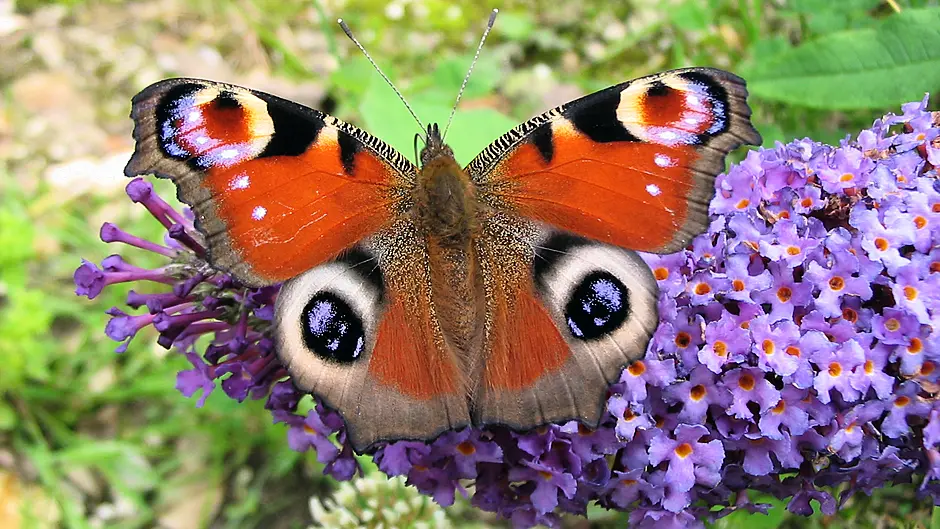AFTER a paucity of butterflies all summer, suddenly they are everywhere in my garden with clouds of small tortoiseshell and peacock particularly prevalent right now.
These are this season’s freshly-hued ‘second generation’ which are busily feeding up now before going into hibernation mode. Several of our butterfly species over-winter here, marking them as true ‘locals’. These are the same colourful insects that will emerge next spring, albeit slightly tattered, to establish 2022’s generation of butterflies in West Cork.
‘Local’ butterflies
The peacock and the small tortoiseshell are generally the first butterflies that we see every year. These are the same individuals that we see feeding now in our gardens. They emerge from their winter-long sleep hidden deep in a hedge or, indoors, behind a curtain in a cool spare room.
When the wings are folded during hibernation, the undersides are usually camouflaged as a bark or leaf colour so a hibernating butterfly is very easily missed – be careful when spring-cleaning!
During their hibernation phase, their energy consumption is minimal, to enable them to survive the winter without food. But, as a protection against the cold, some of the sugar in their blood is converted to glycerol which works like the anti-freeze does in our cars.
After emerging from its winter hibernation, the beautiful peacock lays its eggs in May. These hatch into caterpillars and then go onto pupate before emerging as adults in August. This generation goes into hibernation in late September when the temperature drops too much for them to survive.
The life-cycle of the small tortoiseshell is similar but they fit in two generations in a season. New adults emerge in June or July and lay eggs to produce a second generation of emerging adults in August and September.
These feed up on nectar in the late summer and autumn and go into hibernation for the winter. So they are the long-lived generation compared to their summer parents who survive for a single season only.
Helping hibernating butterflies
If you do find a butterfly in the house after being ‘warmed awake’ by central heating, the best advice is to put it in a box and place it in a cool room until it goes back to sleep, and then the box can be opened. Some experts suggest placing over-wintering butterflies in the salad cooler section of the fridge but this seems rather an extreme solution to me. But a temporary ‘fridge chilling’ to prompt an awakened individual back in hibernation mode might be a good idea.
Once chilled, a cool shed or outhouse is an ideal location to place it, away from direct sunlight and cobwebs. Do not put it outside through as it is unlikely to survive.
If the butterfly has moved a lot since coming out of its sleep it may need feeding. The easiest way to do this is to melt some sugar in warm water, allow it to cool and then soak some cotton wool with the mixture. Gently place the butterfly on the cotton to enable it to feed. But this measure is unnecessary if it reverts to its hibernation-mode quickly.
Before sleep
It’s no wonder that these magnificent creatures are so frantically busy, fluttering around now feeding on nectar before their long sleep.
But they need sunshine to do it because, like most like most cold-blooded creatures, butterflies need the heat of the sun to fly. Essentially they use their wings as solar collectors and this is why the base colour of the butterfly is often black. They are regularly seen ‘basking’ on stone or gravel with open wings soaking up heat to enable them to fly.
Plants that provide nectar at this time of the year are particularly useful to these hibernating species. Buddleia, sedum and red valerian appear to be the favourites in my garden right now and these are very easy species to grow to provide for them.
It really lifts the heart to have a flittering cloud of brightly-coloured wings move around me as I regularly dead-head the ‘butterfly bush’ to guarantee fresh flower heads for them. Such a small effort is amply rewarded by the joy of their magnificent presence in the garden.





